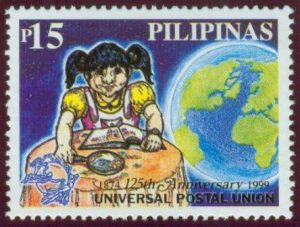Trivia about the Universal Postal Union
The first known postal document, found in Egypt, dates from 255 BC. But even before that time postal services existed on nearly every continent in the form of messengers serving kings and emperors. Over time, religious orders and universities added their own message delivery systems and eventually, private individuals were allowed to use these messengers in order to communicate with one another. In these early postal system the postal charges were generally paid by the recipient.
In the seventeenth century the first international postal treaty was established, consisting of bilateral agreements governing the transit of mail within several European countries. Two centuries later, the web of bilateral arrangements between countries had become so complex that it began to impede the rapidly developing trade and commercial sectors. National postal reforms started the process of bringing order and simplication to the international postal services. Probably the most important of these took place in England in 1840 under the leadership of Sir Rowland Hill. Letters were to be prepaid, using a uniform rate of one penny in the domestic service for all letters of a certain weight, regardless of the distance involved.
On the initiative of United States Postmaster General Montgomery Blair, a conference was held in 1863, in Paris, France, to continue the process of postal reform at the international level. Further attempts to improve the international postal service on the basis of bilateral agreements during the rest of the cultural developments. Heinrich von Stephan, a senior postal official from the North German Confederation, then drew up a plan for an international postal union. At his suggestion, the Swiss Government convened in Berne, from 15September 1874, a conference which was attended by representatives from twenty-two nations. On 9 October- a day now celebrated throughout the world as World Post Day-the Treaty of Berne establishing the “General Postal Union” was signed. Membership in the Union grew so quickly that the name was changed in 1878 to “Universal Postal Union”.
The Treaty of Berne succeeded in unifying a conflicting international maze of postal services and regulations into a single postal territory for the reciprocal exchange of letterpost items. It reduced the multitude of rates for mail between the twenty-two countries which met in Berne to a single rate for all. Within the single territory, the principle of freedom of transit for letter-post items was also guaranteed by all parties. The barriers and frontiers which had impeded the free flow and growth of international mail had finally been pulled down.
Today, by virtue of its mission to promote and develop communication between the people of the world, the UPU is called upon to play an important leadership role in promoting the continued revitalization of postal services.


Recent Comments